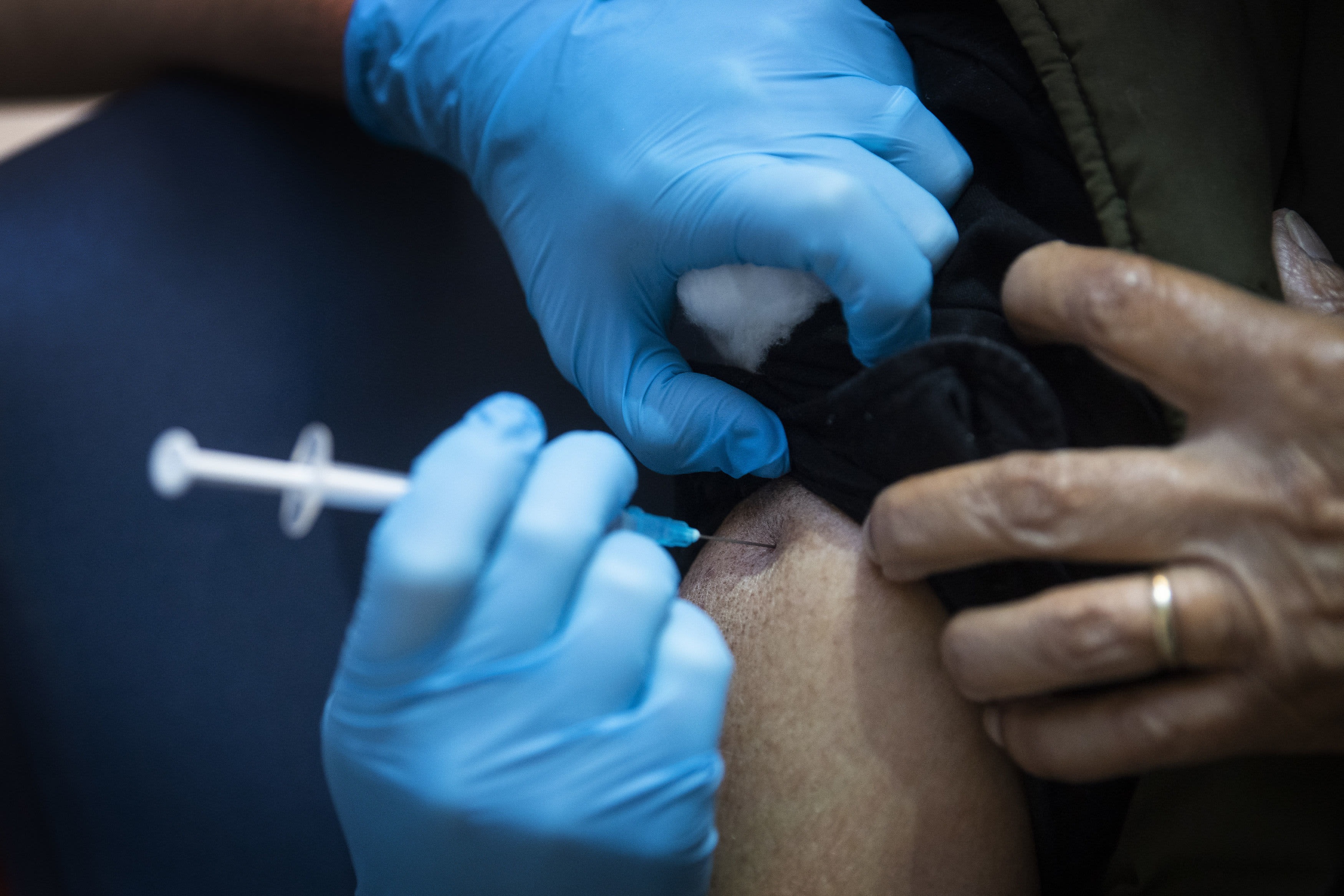A man receives the first of two Pfizer/BioNTech Covid-19 vaccine jabs, at Guy’s Hospital in London on December 8, 2020.
Victoria Jones | AFP | Getty Images
The U.S. federal government will continue to monitor occurrences of Bell’s palsy — a partial paralysis in the face — among people who receive Pfizer’s Covid-19 vaccine after four cases were reported among trial participants, though the vaccine doesn’t appear to cause the condition.
Dr. Sara Oliver, an officer at the Centers for Disease Control and Prevention, said during the agency’s Advisory Committee on Immunization Practices on Friday that there is “no known or expected causal relationship between the vaccine and Bell’s palsy.” The ACIP develops recommendations on how to use vaccines to control diseases in the United States, according to the CDC.
“Post authorization safety and effectiveness studies will be critical as well. Specifically, surveillance for Bell’s palsy could help determine any possible causal relationship,” Oliver said.
U.S. officials plan to continue watching for any adverse reactions to Pfizer’s vaccine in the health-care workers and nursing home residents who receive it, Dr. Nancy Messonnier, director of the CDC’s National Center for Immunization and Respiratory Disease, said during a meeting of the Food and Drug Administration Thursday.
Officials will use a text-messaging system, called v-safe, which is intended to provide early indications about possible adverse reactions from the vaccines.
Bell’s palsy is a sudden freezing or weakness in a person’s facial muscles, and for most people it’s temporary, according to the Mayo Clinic. A member of the group on the ACIP call Friday confirmed that there were four cases of “facial paralysis” among those who received the vaccine. One of the participants experienced the paralysis as soon as three days after the dose while another recipient experienced paralysis as late as 48 days after inoculation.
The four cases of Bell’s palsy among vaccine recipients were considered to be “consistent with the expected background rate in the general population” and “there is no clear basis upon which to conclude a causal relationship at this time,” the FDA said in its briefing documents before its Vaccines and Related Biological Products Advisory Committee meeting Thursday.
During the meeting on Thursday, FDA vaccine reviewer Dr. Susan Wollersheim noted the trial data showed a “numerical imbalance” in cases of Bell’s palsy.
Wollersheim said there were four cases in the vaccine group and none in the placebo group. While the frequency of cases was not above that of the general population, the FDA recommended further surveillance if the vaccine is authorized for broader use.
The VRBPAC on Thursday voted 17 to 4 with one abstention to recommend the vaccine, which the company developed alongside BioNTech, for emergency authorization. The FDA is expected to grant Pfizer’s coronavirus vaccine emergency authorization at any moment following the recommendation.
